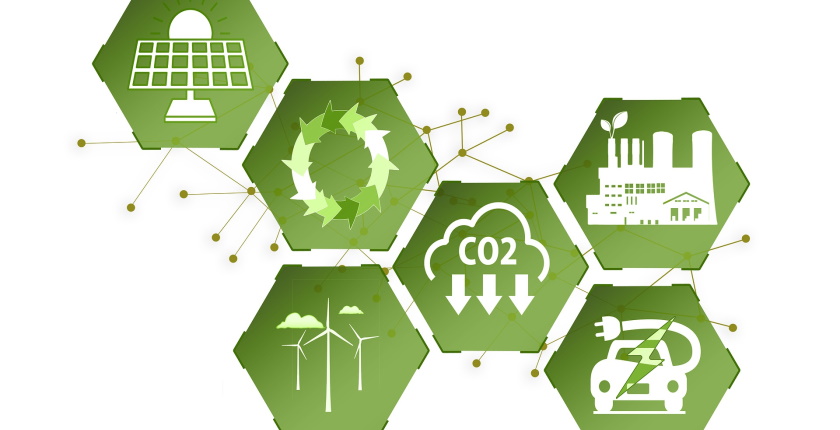
Phto: Gerd Altmann from Pixabay
Half of the Western Balkan countries, namely Bosnia and Herzegovina, Montenegro and North Macedonia, have taken first tangible steps to introduce carbon dioxide (CO2) taxation, in order to speed up decarbonization, but also to avoid paying the European Union’s (EU) carbon tax on imports, which the bloc plans to impose from 2026. Albania, Kosovo*, and Serbia are currently lagging behind.
Power utility Elektroprivreda Bosne i Hercegovine (EPBiH) introduced internal carbon pricing in January 2021. The funds are saved in a special fund, which last year contained EUR 10 million.
Senad Salkić, director for capital projects of EPBiH, said the money is intended only for investments in renewable sources. The BiH authorities have prepared a legal framework for introducing a CO2 tax from 2026, he said at a meeting called CBAM – Splitting wedge or catalyst for the Energy Community?, organized by the Energy Community.
Montenegro has done the most by introducing CO2 taxation in 2020
The internal CO2 pricing was also announced by North Macedonia’s power utility Elektrani na Severna Makedonija (ESM) last year, while its Environment and Spatial Planning Minister Naser Nuredini said at the meeting that the country would also introduce CO2 taxation.
The front-runner in the region is Montenegro, which introduced CO2 taxation in 2020 in line with the rules of the EU ETS.
The Western Balkan countries are under pressure to introduce carbon pricing, partly due to the Carbon Border Adjustment Mechanism (CBAM), which the EU plans to roll-out from 2026 on imports of cement, iron, steel, fertilizers, aluminum and electricity from countries without a carbon tax.
Salkić: the EU’s carbon border tax will affect the entire economy of BiH
EPBiH’s Senad Salkić noted that the CBAM would have a great impact on the entire BiH economy given that about 72% of its exports ends up in the EU.
Salkić explained that BiH signed a memorandum of understanding last May on the introduction of the EU ETS as part of the National Energy and Climate Plan (NECP) from 2026. The intention is to use the mechanism to decarbonize the energy sector, and EPBiH, by 2040. He added that the BiH Council of Ministers had prepared a legal framework for carbon pricing.
Internal carbon pricing was introduced by EPBiH in 2021
According to Salkić, CO2 taxation would also improve EPBiH’s position in the electricity export business.
Salkić pointed out that the company introduced internal CO2 pricing from January 2021 and immediately created a special fund, which amounted to about EUR 10 million last year. The funds are set aside only for investments in renewable sources, he explained, and added that about 95% of the company’s emissions was taxed internally last year.
Nuredini: North Macedonia will bring its carbon pricing into line with the EU ETS by 2030
Environment and Spatial Planning Minister of North Macedonia Naser Nuredini recalled that the country’s nationally determined contributions (NDCs) under the Paris Agreement envisage cutting emissions by 51% by 2030, or 80% compared to 1990.
North Macedonia is diversifying its sources of supply, investing in renewable energy, preparing to build one of the largest hydropower plants in the region – Čebren, and creating conditions for private companies to invest in green energy, said Nuredini.
A new law on climate change is being drafted
He pointed out that the Western Balkans and the EU must demonstrate understanding for the CBAM.
Under a new law on climate change that is being drafted, North Macedonia intends to introduce carbon pricing, initially as a transitional solution, and then to harmonize it with the EU ETS rules by 2030, said Nuredini.
Of note, the Energy Community Secretariat has prepared a proposal for CO2 taxation in contracting parties, which envisages introducing internal carbon pricing right away, developing national systems by 2025, combining them into a single regional system by 2030, and reaching the EU’s carbon price by 2040. The phased introduction of carbon pricing would involve free carbon allowances.


















Be the first one to comment on this article.